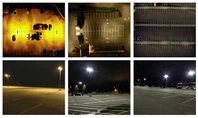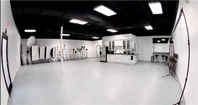How to Choose Correctly for Safety and Longevity?
Installing LED tube lights can be more complex than it seems. The compatibility between the tube and its fixture is critical, and at the heart of this compatibility lies a small but crucial component: the tombstone (also known as a lamp holder or socket).
Choosing the wrong type of tombstone can lead to poor performance, flickering lights, or even create a short circuit that permanently damages your LED tubes-making the "tombstone" name unfortunately literal.
This guide will demystify tombstones, explaining the key types, how to identify them, and how to select the right one to ensure the safety and long life of your LED lighting.
Understanding Shunted vs. Non-Shunted Tombstones
To choose correctly, you must first understand what a tombstone is and the critical difference between the two main types.
What is a Tombstone?
A tombstone is the socket at each end of a fluorescent or LED light fixture that holds the tube in place and provides the electrical connection to the power supply. It is the direct interface between the tube and the fixture's wiring.
What is a Shunted Tombstone?
Function: A shunted tombstone has a single electrical pathway. Inside, a small metal conductor or "jumper" connects the two contact pins.
Electrical Flow: This design allows power to flow from one pin to the other through the tombstone itself, creating a single continuous circuit.
Original Purpose: This type was exclusively designed for instant-start fluorescent ballasts. The ballast provides a single wire to the tombstone, and the internal shunt completes the circuit across both ends of the fluorescent tube to preheat the filaments.
What is a Non-Shunted Tombstone?
Function: A non-shunted tombstone has two separate, isolated contact pins. There is no internal connection between them.
Electrical Flow: Each pin provides an independent path for electricity. The circuit is only completed through the LED tube once it is installed.
Purpose: This is the standard and required type for most direct-wire LED tubes. It provides two separate pathways for line (hot) and neutral wires to connect directly to the tube's internal driver.
The Core Difference:
The fundamental difference is in the flow of electricity. A shunted tombstone creates a single, continuous loop within the socket, while a non-shunted tombstone provides two independent tracks that only connect through the light bulb.
How to Identify Your Tombstone Type
You cannot tell the difference just by looking at a tombstone from the outside, as both types often have identical plastic housings. Here are the reliable methods for identification:
1. Check the Wiring (Safely!)
Power Off: Always turn off the power to the fixture at the circuit breaker before inspection.
Remove the Tube: Carefully remove the LED or fluorescent tube.
Look at the Socket:
A shunted tombstone will typically have one set of wires (e.g., two wires) connected to it, feeding into a single terminal.
A non-shunted tombstone will typically have two sets of wires (e.g., four wires) connected to it, with each wire going to a separate, isolated terminal.
2. The Definitive Test: Use a Multimeter
For absolute certainty, a multimeter continuity test is the most reliable method.
Power Off: Ensure the fixture is completely powered down.
Set the Multimeter: Set your multimeter to the continuity setting (usually indicated by a diode or sound wave symbol).
Test the Pins: Touch the two multimeter probes to the two contact pins inside the empty tombstone.
If you hear a BEEP: This indicates continuity, meaning the pins are connected. The tombstone is SHUNTED.
If there is NO BEEP: This indicates no continuity, meaning the pins are isolated. The tombstone is NON-SHUNTED.
Shunted or Non-Shunted? How to Make the Right Choice
The correct choice depends entirely on your LED tube installation type.
The Golden Rule:
Direct-Wire (Ballast Bypass) LED tubes ALWAYS require NON-SHUNTED tombstones.
Scenario 1: You are installing new Direct-Wire LED tubes.
Action: You must use non-shunted tombstones.
Reason: In a direct-wire setup, the AC power (line and neutral) is connected directly to the tube's ends. Non-shunted tombstones keep the line and neutral wires separate until they meet inside the LED tube's driver, which is the correct and safe configuration. Using a shunted tombstone here would create a dead short across the power lines, potentially blowing a fuse, tripping a breaker, or destroying the tube.
Scenario 2: You are doing a "plug-and-play" retrofit with Ballast-Compatible LED tubes.
Action: You can typically use the existing shunted tombstones.
Reason: These tubes are designed to work with the existing instant-start ballast system. The ballast expects the shunted tombstone to be there to function correctly.
Important Note: While this is easier, it is often less recommended. The ballast remains a point of failure; if the ballast dies, the light will fail even with a new LED tube. The most energy-efficient and reliable method is to remove the ballast and convert to a direct-wire setup with non-shunted tombstones.
Summary of Choice:
| Installation Type | Recommended Tombstone | Why? |
|---|---|---|
| New Fixture or Ballast Bypass | Non-Shunted | Provides independent paths for Line and Neutral, required for safe operation. |
| Plug-and-Play (Using Existing Ballast) | Shunted | Compatible with the existing instant-start ballast system. |
How to Replace a Shunted Tombstone with a Non-Shunted One
If you are bypassing the ballast for a direct-wire LED installation, you will need to replace any shunted tombstones. If you are not comfortable working with electrical wiring, hire a qualified electrician.
Step-by-Step Guide:
DISCONNECT POWER: Turn off the power to the light fixture at the main circuit breaker. Use a voltage tester to confirm the power is off.
Remove the Old Tombstone: Unscrew or unclip the old shunted tombstone from the fixture. Take note of how the wires are connected.
Disconnect the Wires: A shunted tombstone will have wires connected to a single terminal. Disconnect these wires.
Prepare for New Wiring: In a direct-wire setup, you need to provide both a Line (hot) and a Neutral wire to the tombstone. You may need to run an additional wire from the power source.
Install the New Non-Shunted Tombstone: Secure the new non-shunted tombstone to the fixture.
Connect the Wires:
Connect the Line (hot) wire to one terminal of the tombstone.
Connect the Neutral wire to the other, separate terminal of the same tombstone.
Crucial: Ensure the connections are tight and secure, with no exposed copper wire.
Repeat and Reassemble: Repeat the process for all tombstones on that end of the fixture (typically, one end receives line/neutral, and the other end is just for mechanical support). Reassemble the fixture.
Restore Power and Test: Turn the circuit breaker back on and test the new LED tube.
By taking the time to understand and correctly select your tombstones, you move beyond a simple bulb swap and perform a proper, professional-grade upgrade. This informed approach ensures your LED tubes will operate safely, efficiently, and will deliver on their promise of a long and trouble-free lifespan.








